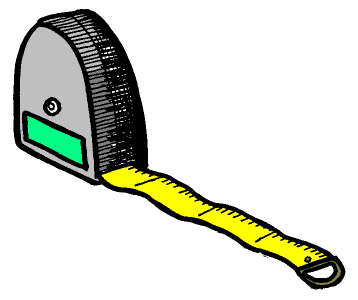Wharton Portable
Buildings El Campo,
Texas

Click for weather forecast

City of El Campo, Texas website
|
Wharton
County proper was created in 1846 from parts of
Jackson and Matagorda counties and named after
James A. and William H. Wharton, brothers who
were active in the Texas Revolution. |
|
|
|
El
Campo is situated in the center of an area, which is
now known as the Coastal Plains of Texas. Because of the
bountiful native grasses, these plains were used as open
range for cattle by Spanish explorers, later by Mexican
cattlemen and then settlers brought in by Colonist
Stephen F. Austin. After Texas won its independence from
Mexico, German, Irish and Swedish immigrants moved into
the area and cattle production remained the principal
income of the people.
Cattle were driven
to Indianola and Port Lavaca, where they were
slaughtered - not for food, but only for hides and
tallow, which were easily shipped by boat to foreign
countries and northwestern ports of the United States.
Between 1850 and
1865, trail drivers were slated along the old Atascosita
and Opelousas Trail to New Orleans and Mobile to
railroads where beef could be shipped to the south and
to the northeast. Because so many rivers and forests
hampered the driving of the cattle, as soon as rail was
available, herds were driven up the Chisholm and other
trail routes to Abilene and Kansas because of more
suitable open country.
|
In
1882, a railroad camp (section No. 230) was
situated where El Campo now stands. The little
camp was first called "Prairie Switch" because
it served as a switching point on the
Houston-Victoria Railroad and a shipping point
on the New York, Texas and Mexican Railroad.
|
|
| |
In fact,
during the mid-1880s, El Campo was the largest
prairie hay shipping point in the entire United
States. |
|
"The
designation 'Pearl of the Prairie' was given to
the site by American cowboys, perhaps because
the light in the section house looked like a
pearl across the prairie at night." |
|
In the late 1880s,
railroads were becoming much more extensive in Texas. A
continuation of a railroad by Count Telferner from
Houston to Victoria allowed easier shipment of cattle.
|
Herds to
be shipped by rail were handled by predominantly
Mexican cowboys who would camp for some time
holding the herds for shipment at "Prairie
Switch." In 1889, the settlement took the
Mexican name "The Camp" and named it "El
Campo." |
Since much land
was originally under government ownership, railroads
were given large grants of land in exchange for building
roads in this county. In return, the railroads would
sell this land to settlers in addition to homestead
grants already given to the settlers. More and more
fencing was done because farmers needed to protect their
crops from the large number of cattle herds.
Ranching became
the chief industry and thousands of cattle were shipped
yearly to San Antonio. Four large ranches - The Texas
Land and Cattle Company (K.O. Ranch) to the south,
Pierce Ranch to the east, Herder Ranch to the west, and
Brown Ranch to the north, surrounded the new settlement.
|
It didn't
take farmers long to realize that the rich
blackland and mixed soils along with an
abundance of ground water, |
|
could be
better utilized for other crops besides hay,
although in 1901 over 1,000 cars of hay were
bought by El Campo merchants. Soon cotton, rice
and corn became the crops of choice. |
|
Settlers from
other regions and countries began moving into the area
and soon a cotton gin was built and the Farmers
Warehouse established for marketing land and purchasing
farm products and supplies.
While the town was
still in its infancy, the organization of schools and
churches began. The first schoolhouse was a one-room
shack, but by 1895 an independent school was created.
Between 1890 and
1898, seven congregations organized their churches -
Swedish, Lutheran, Baptist, Methodist, Presbyterian,
Catholic and German Lutheran.
The real
development of El Campo did not begin until the
destructive fire of 1896, in which the principal
business section of the city was destroyed. By 1900,
there were 130 businesses in El Campo. However, in 1901,
just when the town had become prosperous again, another
fire destroyed a large part of the mostly wood framed
buildings. Brick buildings replaced the now charred long
rows of wooden structures. The El Campo Brick and Tile
Company, established in 1909 by W.E. Chandler, (located
on west Monseratte at Palacios Street) provided building
materials and bricks for many of the permanent
structures at the turn of the century. The bricks can be
found in some of the downtown buildings today.
In 1901, a library
was organized and in 1902, the first bank was
established. The City of El Campo became "officially"
incorporated in 1905. A municipal government was
established and administered by a council composed of
five aldermen and a mayor, who served as president of
the council. The first ordinance was published in June
of 1905.
|
The El Campo
Ice and Water Company (located in the 300 block
of W. Monseratte) was established in 1907, which
was a |
| |
plant
designed to light businesses, streets and homes.
The facility also supplied ice for the entire
city.
In 1908 a
train load of more than 200 homesteaders arrived
to add even more people to the melting pot of
immigrants, along with the establishment of the
El Campo Volunteer Fire Department. |
|
The fire
station was originally located on S. Mechanic in
the J.B. Morford plot and still stands today. |
In 1903, the El
Campo Rice milling company was established and by
1904 there were 70 rice farmers around El Campo with 126
pumping stations and another rice mill - the Broussard
Rice Mill.
1914 brought the
consolidation of the two mills into El Campo Rice
Milling Company (now known as Elco). At one time dried
rice hulls were compressed and used as brick and
experimental building materials.
Medicine came to
El Campo in 1890, with the arrival of two physicians and
in 1912 the first hospital opened. The first newspaper
issue was published in 1894 and came to be succeeded by
two others.
El Campo's
birth into "civilized" wealth brought the building of an
opera house, built in the late 1880s to early 1890s
(located on
| |
S.
Washington); a movie house, built in 1908 and
known as the "Nickelodeon" located on N.
Washington; and a gazebo for monthly wrestling
matches, located in the now Alamo Park.
|
A second theater
was built in the 1920s and was called the Normana
Theater.
The Rice Hotel,
located on E. Monseratte, was built in the 1880s and
once was a hot spot in El Campo.
1909 brought
disaster to El Campo again as "The Great Storm" hit.
Many El Campo businesses suffered greatly, but
the perseverance and intestinal fortitude of the
citizenry held true as they started over again.
The mid 1930s
brought the newly discovered commodity of "liquid gold"
as oil and gas spawned the way of the petroleum and oil
field related industries. The petroleum industry also
|
brought new
life and spurred on the development of new, more
modern technology, as well as diversifying the
local economic base. |
|
Wharton Portable
Buildings
of El Campo, TX has
Derksen Buildings. Derksen Portable
Buildings and sheds are extremely popular in
El Campo, Texas because of the quality building and
materials used to make their portable
buildings.
El Campo is
a city in Wharton County, Texas, United States. The
population was 10,945 at the 2000 census, making it
the largest city in Wharton County.
Wikipedia
 |
Americans throw away thousands of
dollars every year for rented mini-storages.
Wharton Portable
Buildings gives you the opportunity to own
your storage building with very little down and easy
monthly installments, by offering a
Rent-To-Own option.
Come by our lot to visit
with one of our friendly team members and let them help
you
custom design your new
Derksen building or pick your favorite from the
inventory at our
location in Wharton, Texas.
Ask about
our FREE
delivery!
Make sure you meet all the
delivery requirements
here.
Delivery space is
important too.
(979)532-8254 |

Financing
available or
Rent to Own |
Buy or
Rent-to-Own
with
No Credit Check!

Rent to own was established
as an alternative to commercial storage. The low
monthly rental rates are comparable to commercial
storage rates per square foot, however, our
Rent to
Own program allows you to have your
storage facility in your own backyard. You are not
required to fill out a credit application, nor are
you required to keep the building. If your building
becomes a financial burden or if for any reason you
no longer need the building, simply
contact us and we will
promptly pick it up and your credit will remain
untarnished. |
 |
 |
|
































